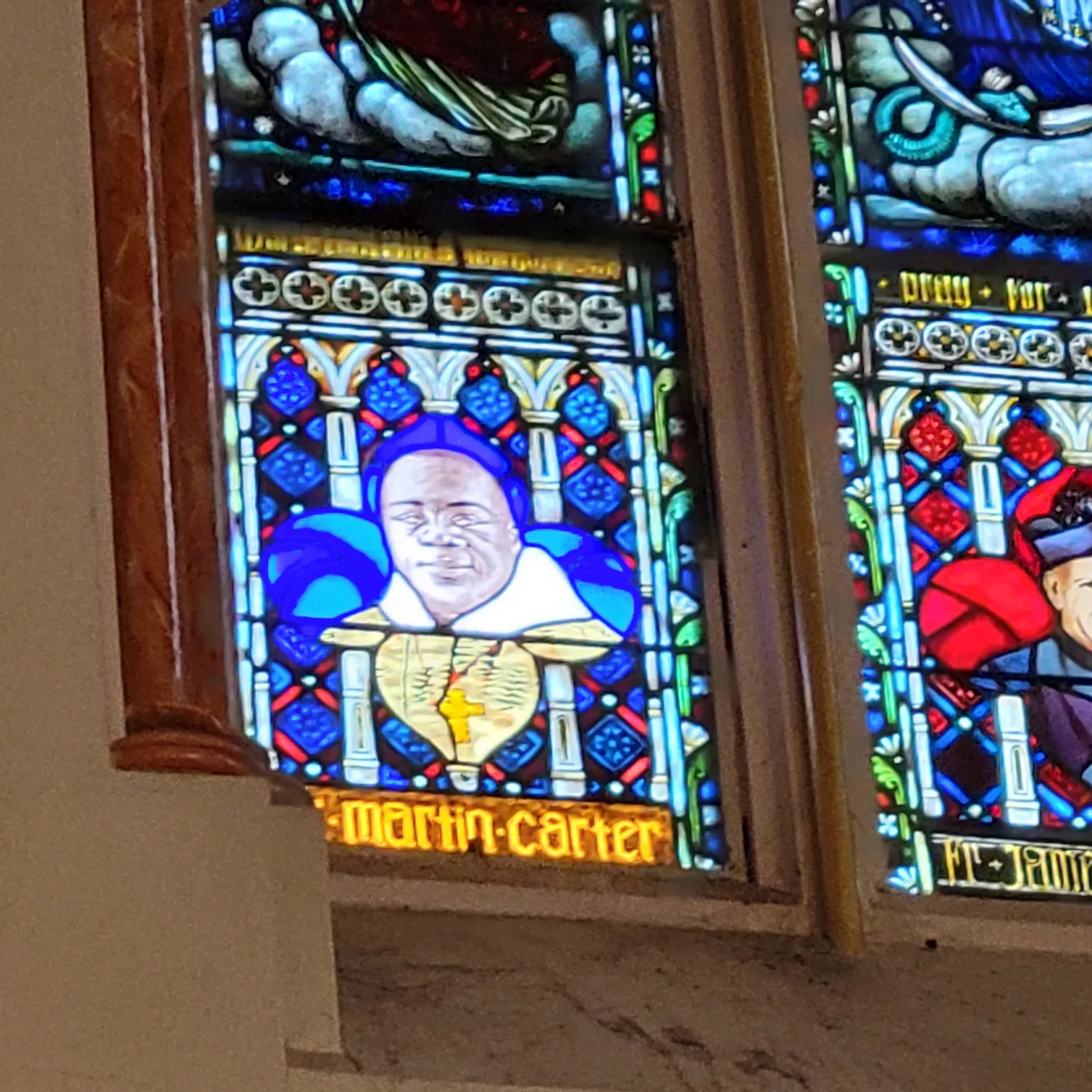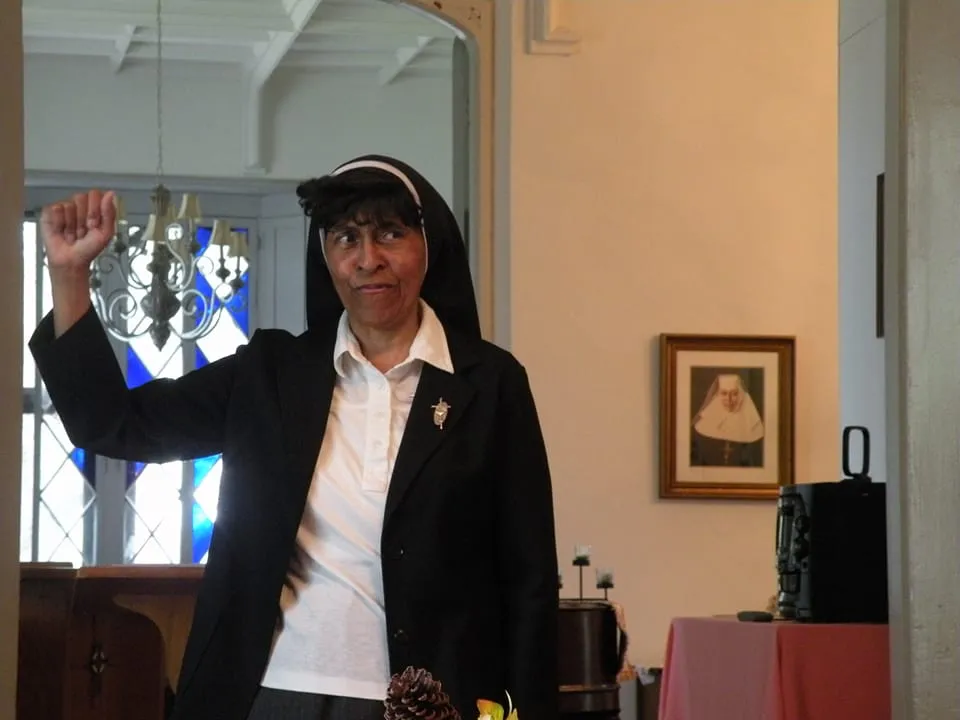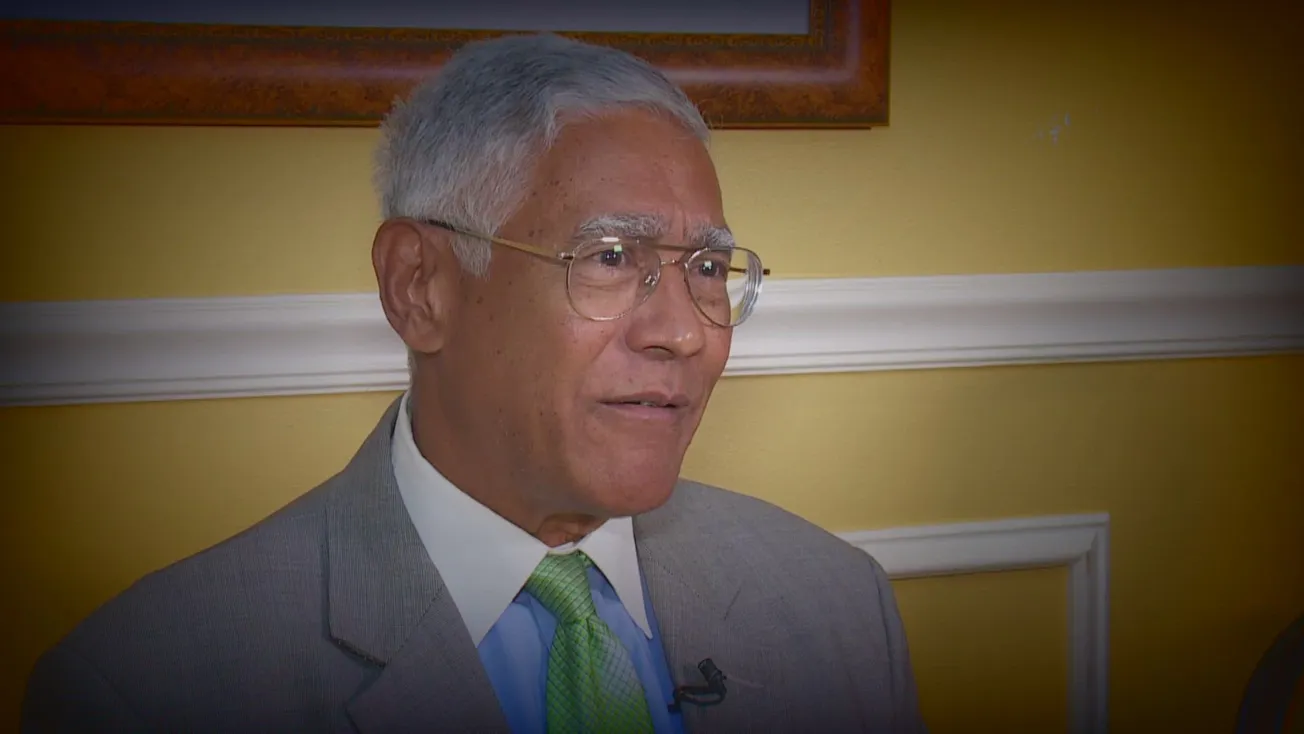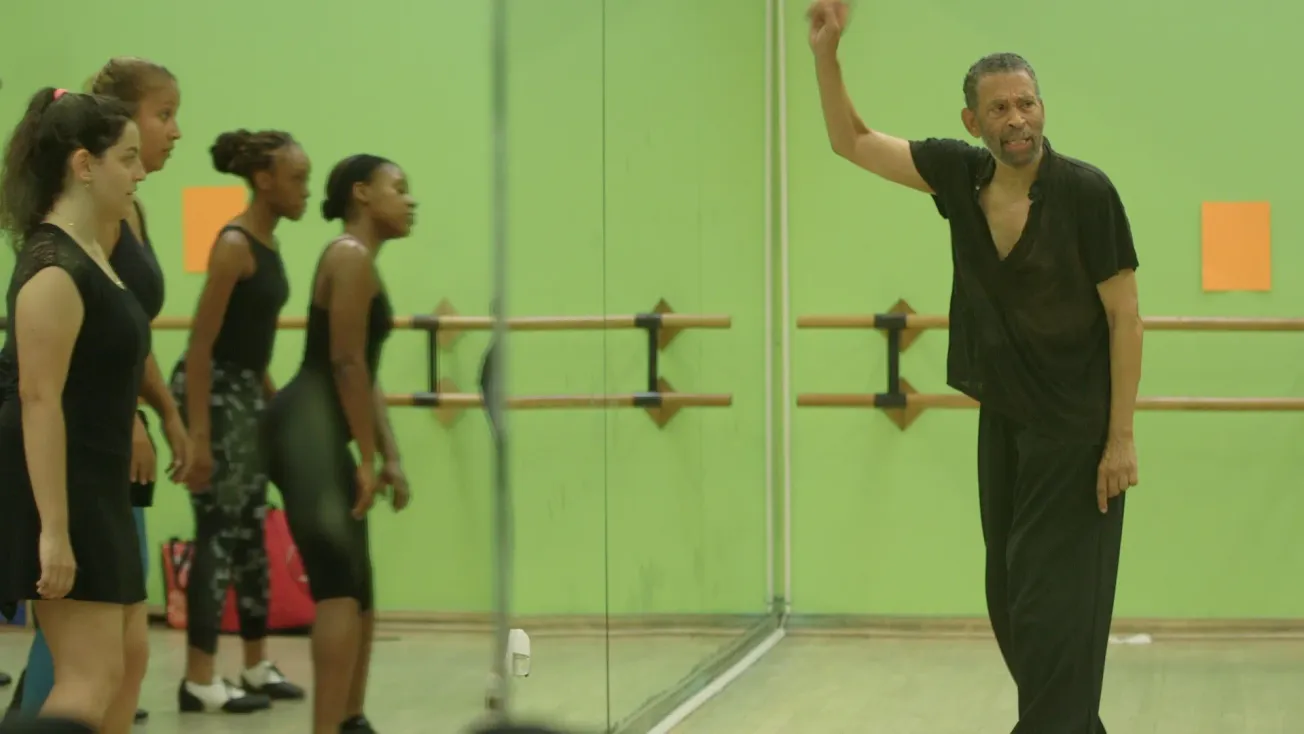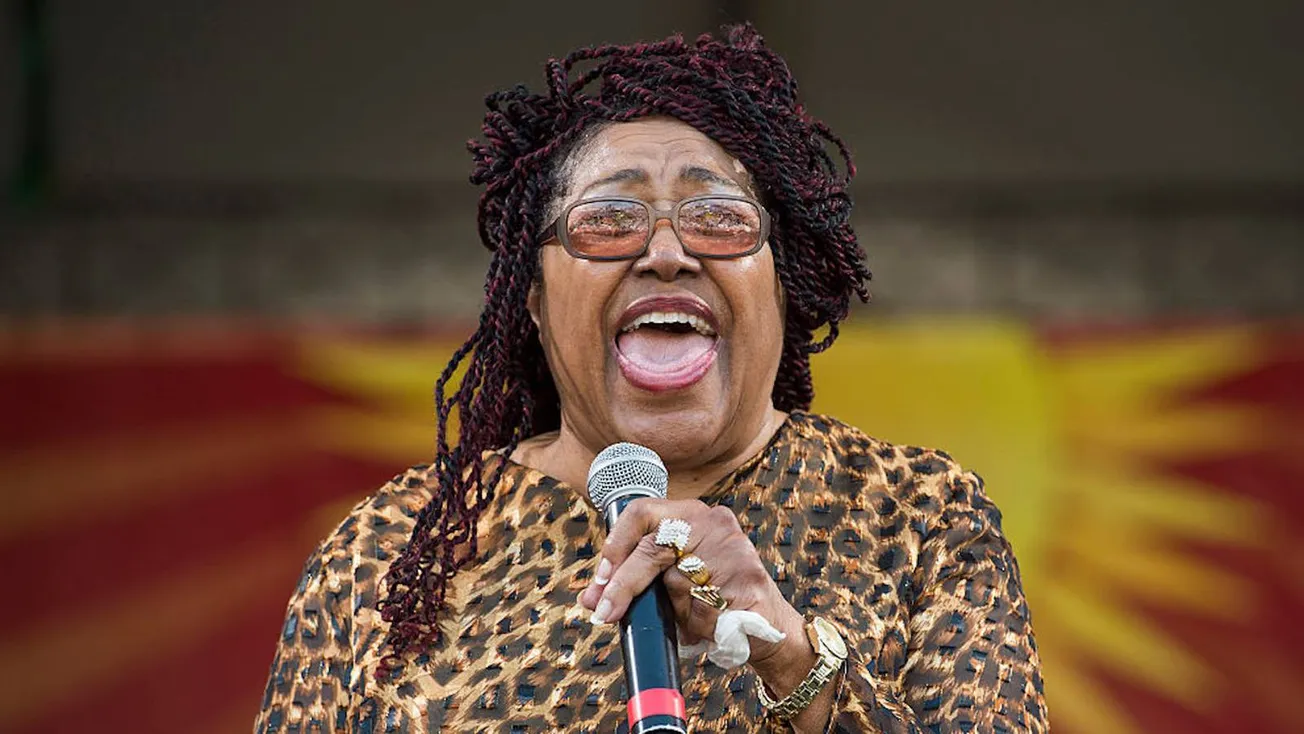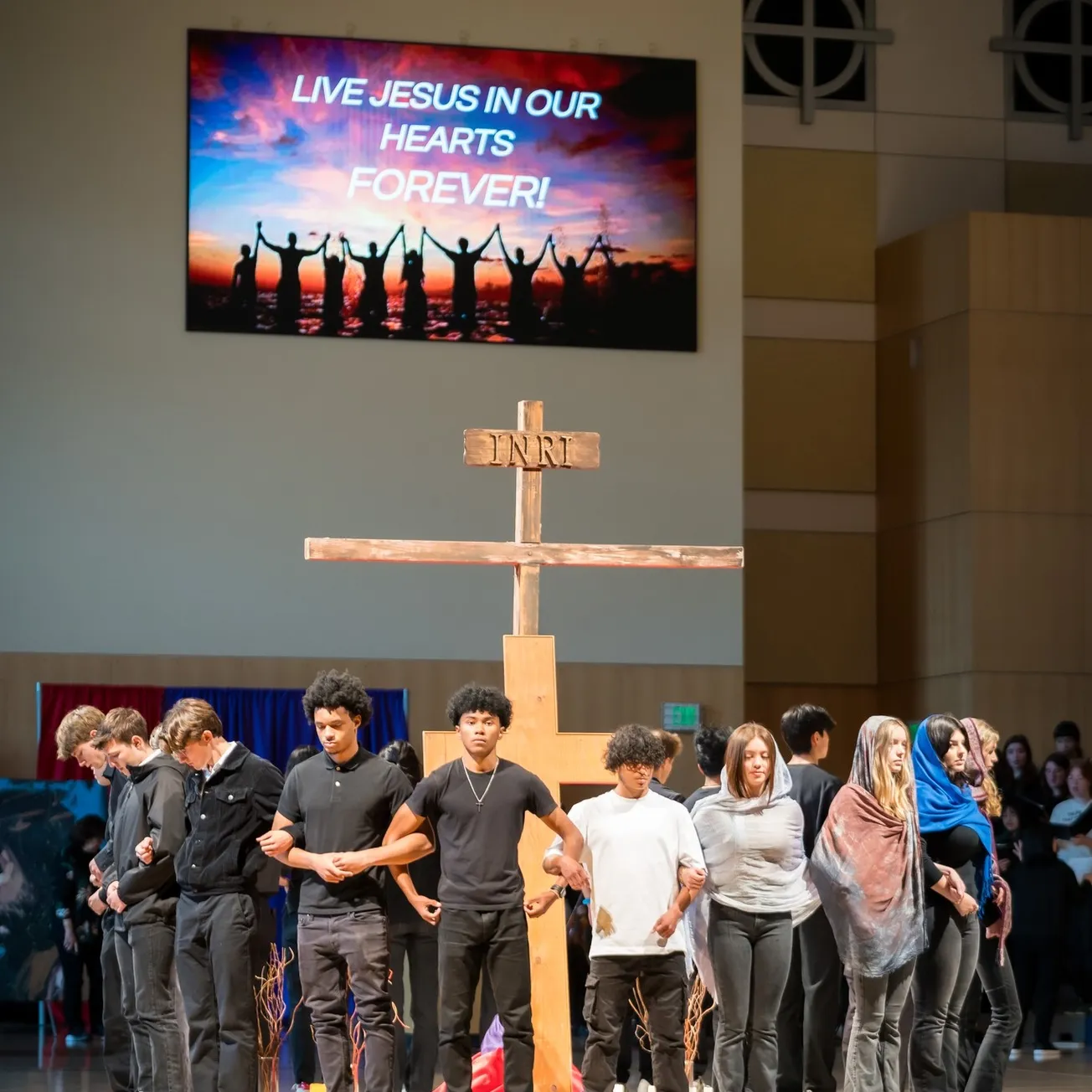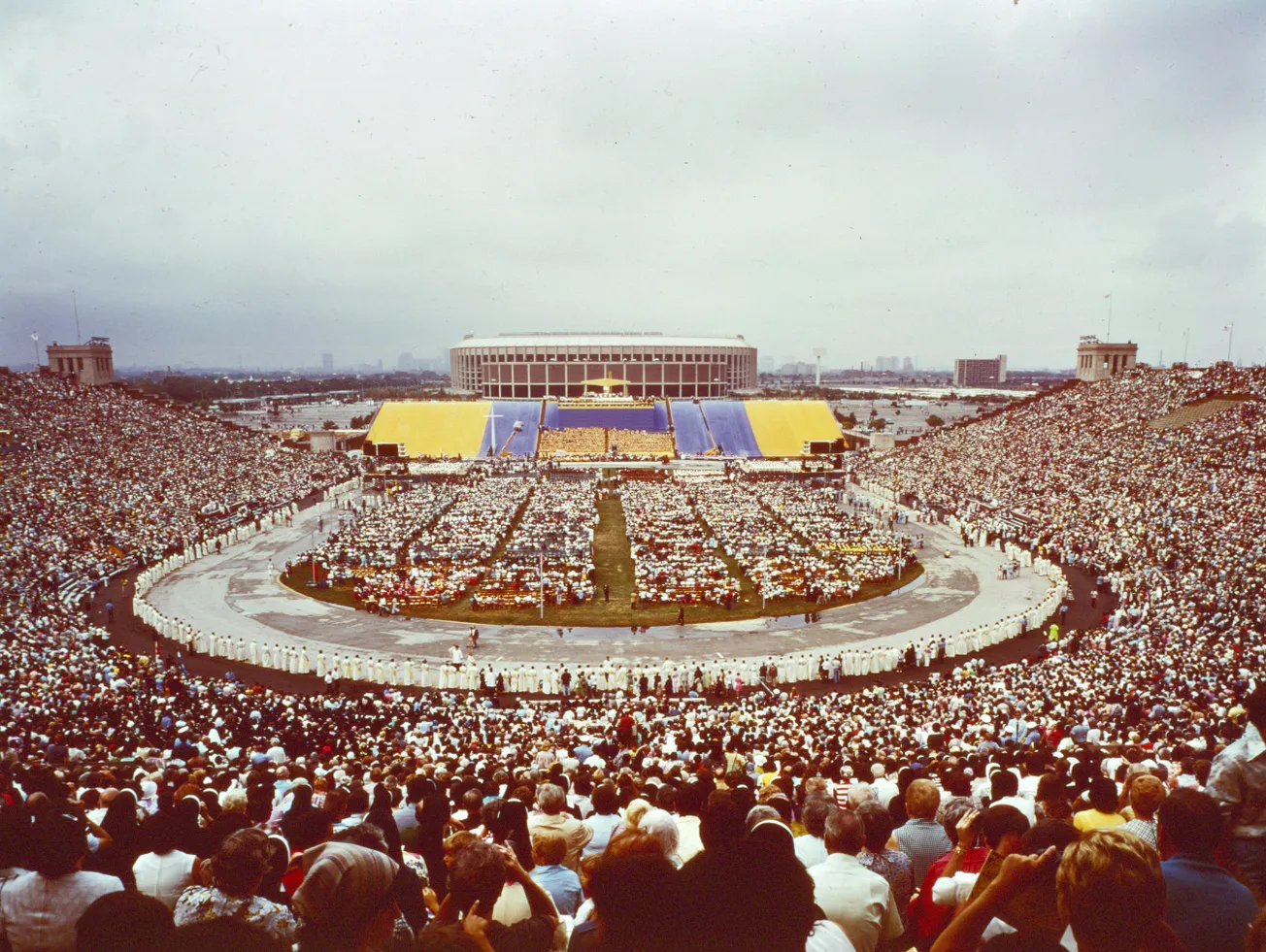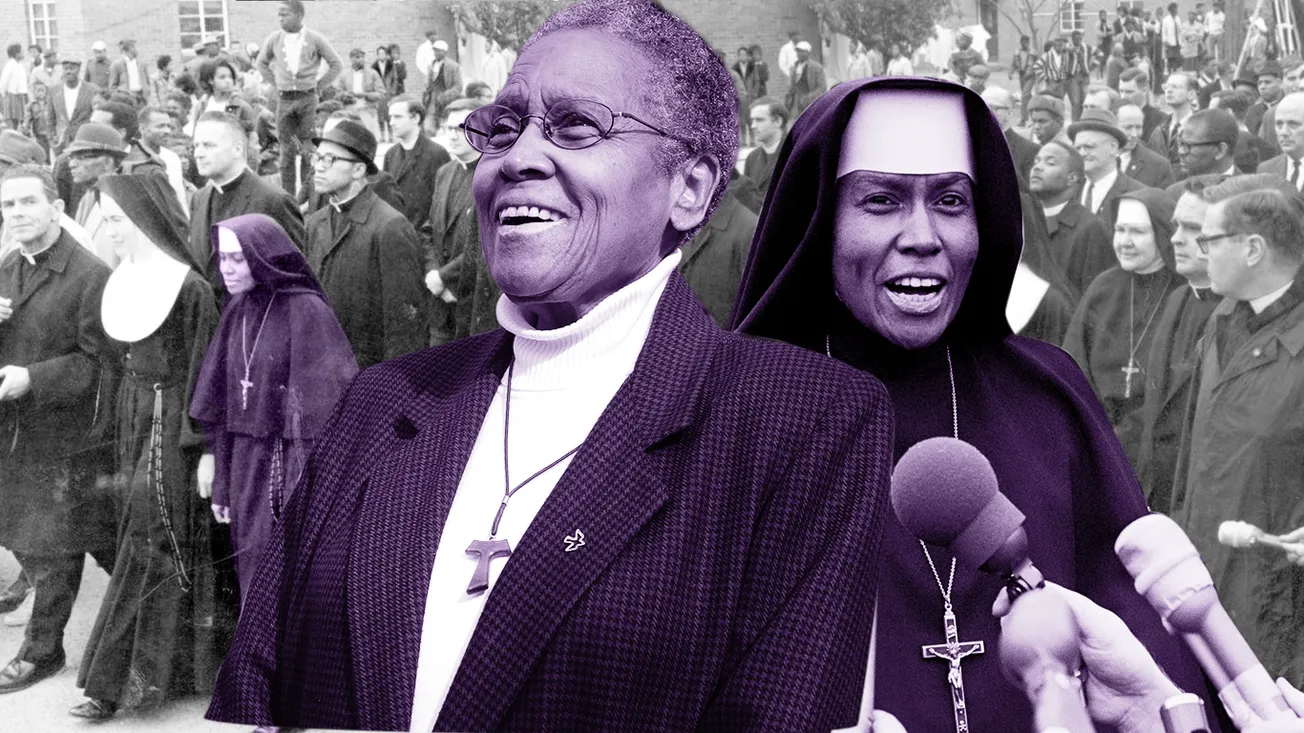A priest and a pastor
For me, this story begins in the fall of 1988. I was a new (and much younger) parish representative selected to the Office of Black Ministry in those days. The scene was the monthly Parish Liaison meetings for the OBM.
The liaisons were representatives from different parishes throughout Brooklyn and Queens who brought information from the office to the parishes. The meetings also offered education on the Black history of the Catholic Church. Fr Martin Carter, SA was the newly appointed diocesan vicar and director of the office.
Carter, a tall, dark man with a great big, beautiful smile, would begin the meeting in song.
“He had a song that he always believed in. He would sing it in his rich baritone voice,” said Georgianne Campbell, a board member and former OBM liaison.
“You could feel it throughout your entire body.”
“Spirit of the living God,
fall afresh on me.
Spirit of the living God,
fall afresh on me.
Melt me, mold me, fill me, use me.
Spirit of the living God,
fall afresh on me.”
“If you stayed around Fr Carter long enough, that spirit of the living God would change you; fix you; melt you; mold you; and want you to be a child of that living God as well,” said Campbell.
On January 7th, 2022, a fresh winter snowstorm provided a picturesque background of snow on the trees and the sidewalks of Brooklyn. The sun shined on the tall steeple of a landmark church: Our Lady of Victory. A funeral hearse was parked at the corner.
Carter, the first African-American pastor in the 154-year history of the parish, had passed away on Christmas Day.
While a funeral is normally a day of mourning, parishioners, those who worked with the OBM, friends, family, and clergy came not to mourn. They came in celebration. They came to shout the victory of a Franciscan friar who loved his Black people. Their lives mattered to him long before they “officially” mattered.
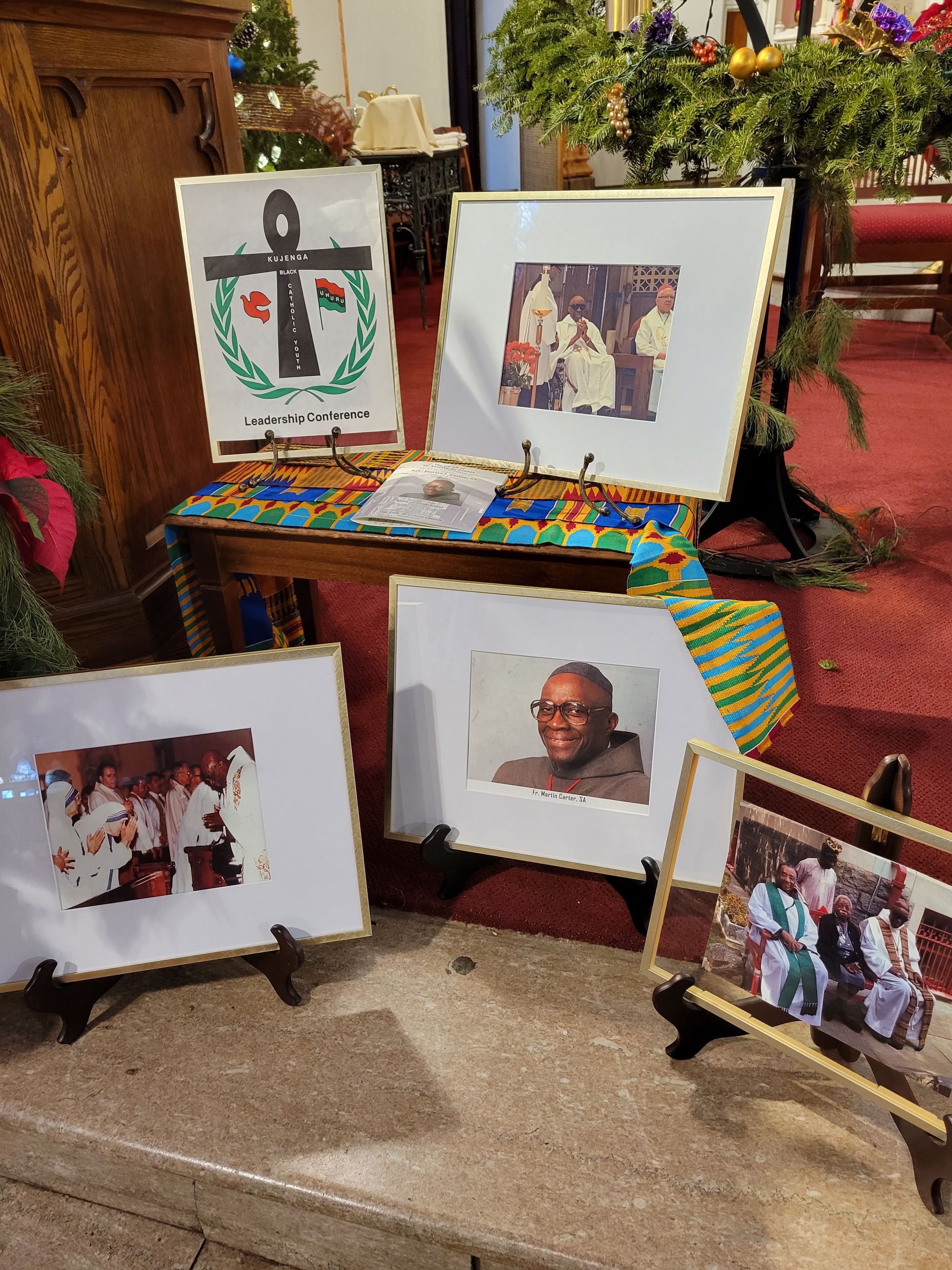
The first of two funeral Masses took place at Victory. Bishop Robert Brennan of Brooklyn was the main celebrant for the Mass of Transferal, and Fr Alonzo Cox of the Parish of St. Martin de Porres (which includes Our Lady of Victory, Holy Rosary, and St. Peter Claver churches) was the homilist. Cox is the current Vicar for Black Catholic Concerns, which succeeded the OBM.
The Mass of Christian Burial took place the next day at the Graymoor Friary in Garrison, New York. Fr Kareem Smith, also close to Carter, was the homilist. A small contingent of Brooklyn diocesan parishioners made up the choir. Both Masses were filled with spirited music, bringing back memories from a time long past in Brooklyn and of the clergyman who led the effort.
Darcel Whitten-Wilamowski, the director of the choir, attended the Mass of Transferral and shared her memories.
“I think about the road we've all been on, and going way back when there was nothing for us at all. When our music didn’t exist in the Catholic Church. When the very idea of being community didn’t exist because it was a power thing,” she said.
“The Mass was Latin, and the priest had his back to you.”
After visiting relatives in the Protestant churches where “the Bible was a friend, as opposed to a foe”, Whitten-Wilamowski asked herself: “Why can’t we, as Catholics and of African ancestry, have our culture in the mix of Catholicism?”
“Finally, and at last, this tall, dark brown, bald man came to the Diocese of Brooklyn to take over the Office of Black Ministry. And he came with the idea of a Rite of Passage, something that we—young people of African ancestry and who are descendants of slaves—never had the opportunity to experience with our ancestors because of the Middle Passage,” she said.
“He came giving it back to us. Helping us to be proud of what we saw in the mirror.”
On a Saturday in February 1990, the diocese’s Black History Celebration was held at the Basilica of Our Lady of Perpetual Help. Whitten-Wilamowski, accompanied by her husband Alex, led youths from the area to form the Sounds of the Spirit of Praise Brooklyn Diocesan Choir. They gave a spirited testimony of music.
Fr Jim Goode, OFM—a former Brooklyn pastor and founding director of Brooklyn's first diocesan Black Catholic ministry—preached the homily that day. It was not a typical Catholic Mass. It was a revival. In later years, the celebration moved to St. James Cathedral Basilica, where many more celebrations of Black culture and music took place.
Under Carter’s leadership, the OBM held workshops to teach the masses about Black culture and spirituality. It also brought a three-day event at the Immaculate Conception Center in Queens called “Praise Him”, offering leadership training for Black laity. Other laypeople, clergy, music ministers, and vendors came in from all around, teaching from their experiences in the Church. And there was more music. Black spiritual, gospel, and sacred music.
“The workshops were one thing. Praise Him was for the masses,” said Campbell.
The weekend ended with a Mass and a reception, followed by a performance from Daniel Coakley, of St. Aloysius in Harlem.
“At that Mass, the Franciscan Handmaids of the Most Pure Heart of Mary came,” Campbell said, referring to the order of Black sisters based in New York City.
“Sr Loretta Theresa, FHM was a member of St. Aloysius, so they came out in full force for that weekend workshop.”
A prophet among his own
At one of the liaison meetings, Carter spoke about the need for unity in the Black community. He opened the “Lead Me, Guide Me” hymnal, and found a hymn written by Charles Albert Tindley.
Tindley, an African-American composer and minister, wrote the tune in 1905. Carter led the group in song:
“When the storms of life are raging, stand by me.
When the storms of life are raging, stand by me.
When the world is tossing me, like a ship upon the sea,
thou who rulest wind and water, stand by me.
In the midst of tribulation, stand by me.
In the midst of tribulation, stand by me.
When the hosts of hell assail, and my strength begins to fail,
thou who never lost a battle, stand by me.”
Carter brought comfort and advice to me myself, during the times when Black parishioners questioned and rejected me as well as a new cultural ministry at my parish.
“What is this Black thing?!”
“It’s a separatist group!”
When those racist comments come from your own people, it hurts. Fr Carter, however, would always say to me: “If you give up, the evil will continue to exist.”
Even so, after altercations with parishioners, I considered leaving the Catholic Church.
It was then that the parish staff asked me to have Fr Carter come for Black History Month and “spend the day with us”. On Sunday, March 4th, 1990, he did.
He co-celebrated at the early Mass and afterward met with the children of the CCD program; later, he was the main celebrant at our last Mass, at 12:45 pm. His homily moved many to tears. Our choir was phenomenal that day.
It was a new beginning for my parish.
Fr Carter returned to do two more celebrations. And when I asked him to call parishioners who could not make it due to illness., he gladly did. It would be a thrill to him, and to those parishioners who got a phone call from “Father Carter”. (Some even went so far, in their excitement, as to call him “Bishop Carter”.)
In a New York Times article on February 6th, 2000, Fr Carter told of being rejected by seminary after seminary because he was Black. He was later accepted into the Franciscan Friars of the Atonement and ordained a priest decades later at age 50. In 1995, he became the first Black pastor of Our Lady of Victory.
But what should have been a sense of pride for the Black community in the Bedford-Stuyvesant section of Brooklyn quickly turned to rejection.
He told the Times: “There were those that said, ‘We don’t want no Black priest.’”
There was a resistance to change. Many couldn't come to terms with not having a White pastor. Further controversy came when Fr Carter sent a nun to the front of the church, with a can of paint, and had her paint the statue of the Blessed Virgin Mary from White to Black. The congregation of Victory was in an uproar.
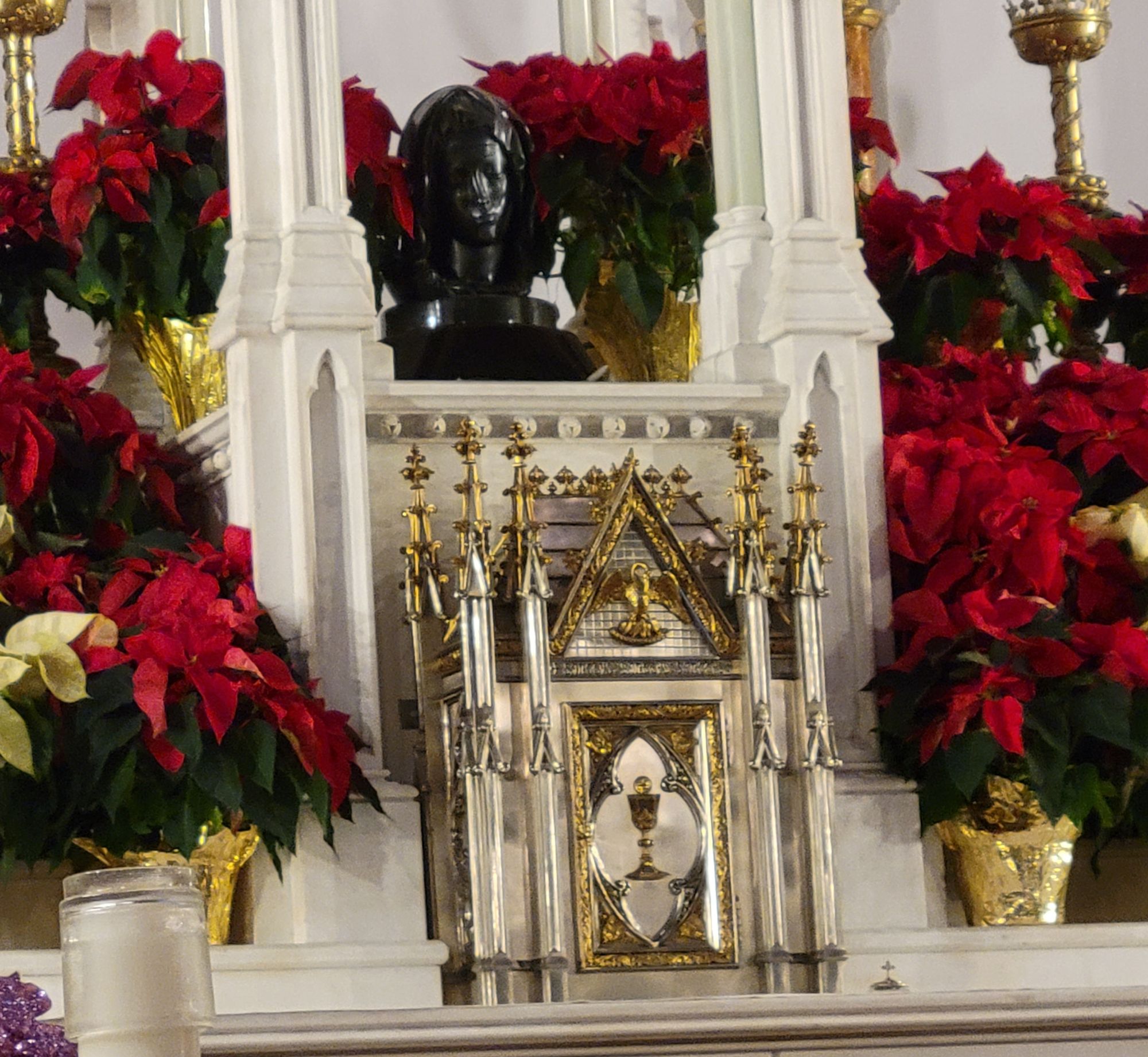
Campbell described those parishioners’ attitudes as “ignorance.”
“When you don’t know about something, you have no reason to accept it,” she said.
But just like he educated his liaison team, he educated his parishioners. Soon, the attendance and collections climbed. Those who didn’t want a Black priest soon embraced a church and a priest who was in their own image.
Victory found its way to victory.
Watchful for the lambs
The greatest legacy Carter left with the diocese (and the nation) is the Kujenga Youth Conference. He founded it in the Archdiocese of Chicago in 1977, where he taught at Hales Franciscan High School, and later brought it to the Diocese of Raleigh. He established Brooklyn’s Kujenga in 1989.
Originally entitled Kujenga Northeast Conference—from the Swahili word meaning “to build”—the event is a retreat geared toward the spiritual, cultural, and leadership development of Black Catholic youth. The goal was to build pride in being Catholic and form leaders. Today, there are Kujenga Youth Conferences in dioceses around the country.
A major focus of the retreat is religion. There is a penance service, morning prayers, and Mass. Youth are taught leadership skills in group sessions and presentations from parish and community leaders. Entertainment comes in the form of a talent show and social. The weekend ends with a Rite of Passage ceremony, honoring high school graduates.
Another major emphasis of Kujenga is African heritage and cultural identity. In earlier years, Rite of Passage participants wore African dress. An African sash is given to graduates and African-inspired gifts are given to participants during Mass.
Kujenga has also evolved over the years, and the Brooklyn Kujenga now has three class groups: Ankhs (freshman), Sankofa (sophomores), and Doves (juniors and seniors). The creation of the three classes kept the retreat alive and well.
Dennie Foster, a parish leader in Queens and an original Kujenga chaperone, recalled Carter’s influence.
“Fr Carter spoke a new direction for the office, [introducing] new ideas, including implementing the Kujenga Youth program, [which] he implemented in North Carolina,” she said.
Foster noted that the number of youths in attendance in its early years in Brooklyn was much smaller.
“It was maybe no more, at that time, than 25 to 30 kids,” she said.
“And each year the population grew with the kids.”
Shaniqua Wilson, a former administrator for the Rockville Centre Diocese and an active member of the Knights and Ladies of Peter Claver, also attended the first Kujengas as a youth. She recalls them as an “exciting and amazing experience”.
“[I was] away from home for the weekend, outside of my particular parish church, and seeing that I was not the only Black Catholic aside from the kids I went to school with,” she said.
“There was a tribe of us.”
Wilson, lovingly recalls that first Kujenga.
“It was good Christian fun. It was different for a lot of us, because it was our first time being away from home, and being at a church retreat where everyone looked like us,” she said.
“We were in a space with Kente cloth garments, vestments. Even the material on the altar. Just feeling welcome. Feeling at home. It felt right. Nobody questioned it… They reinforced the fact that this is our Church.”
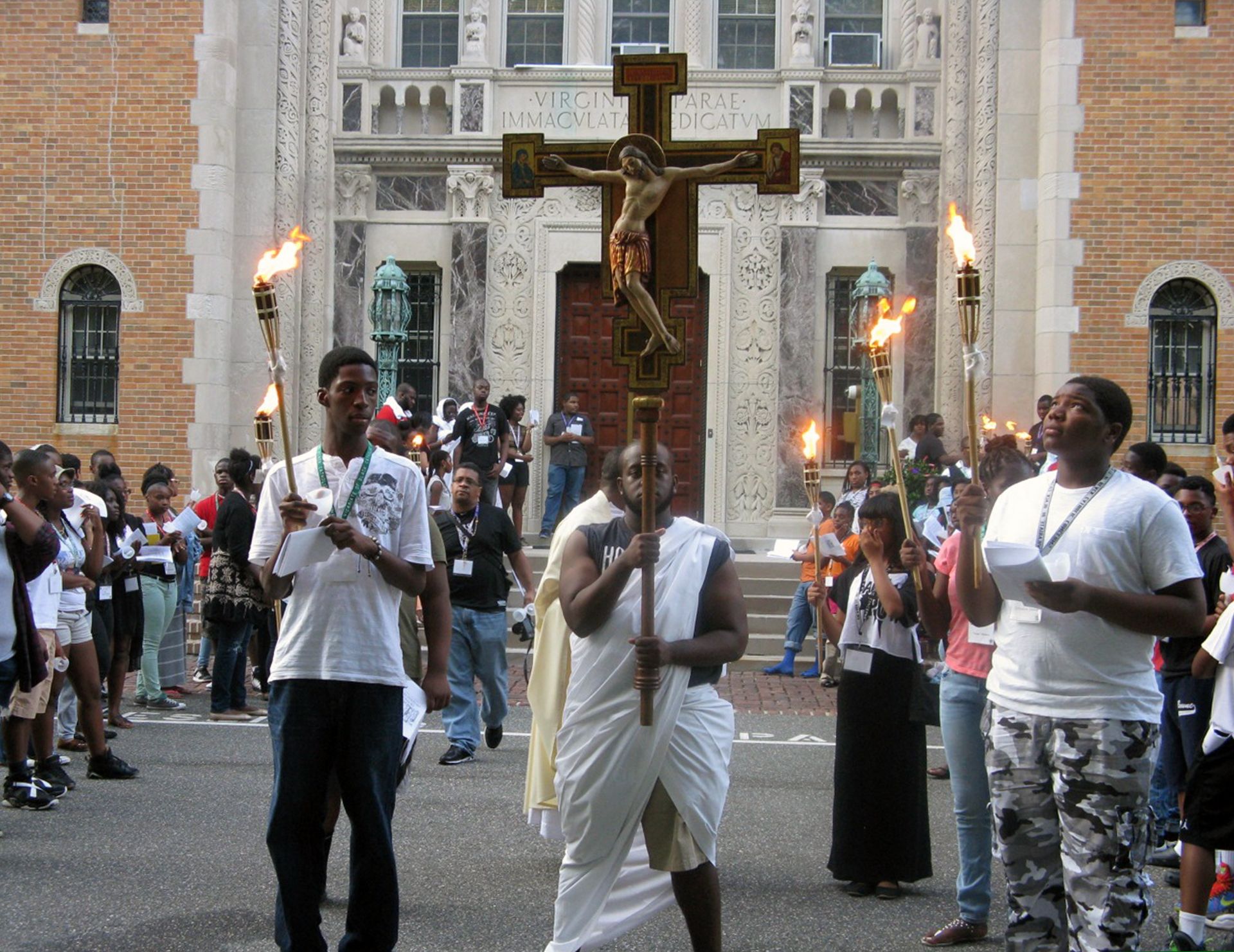
Kujenga originally came to Brooklyn during one of the most trying times in New York City. The Central Park Five case, where a female jogger was violently raped in the in the spring of 1989, drew major headlines around the country—and stoked fear in the city.
Five Black youths were arrested and convicted for the crime, but in 2002, the charges were thrown out when another man confessed. The exonerated five later reached a settlement with the city, but the fear left its mark.
“We, as Black children, could not go outside. We were [seen as] wild animals. You had to be inside [or] you would be arrested,” said Wilson.
“[Kujenga] was the first time we got out and were able to be out and be safe. Be one and be at peace. And God kept us.”
Wilson noted the impact of having the youth in a place with the Blessed Sacrament exposed, and the retreat leaders “telling us that Jesus died for us, bleeding, sweating, and going to Calvary.
“We were all in tears. It was a mess, but it was a beautiful mess.”
Stephen Gregory McMullen, a Catholic evangelist known as “Brother Gregory” and a leader in the Brooklyn Kujenga, described Carter as a “big man with a powerful voice and warm heart for the Black Catholic community in Brooklyn.”
Quoting Carter, McMullen said: “For the Catholic Church to continue to be a vital part of Brooklyn, our youth must take a position of service, standing up in the here and now!”
“[That] motivated me to work in the Office of Black Ministry,” McMullen said.
“The youth of our Church are a priority and should be used for more than just moving chairs and taking out the trash. Black youth must take ownership in the Mass, making it a holistic place of praise and worship.”
A shepherd of shepherds
Fr Dwayne Davis, pastor of St. Thomas Aquinas Church in Brooklyn and a Kujenga alum, called Carter “a true champion for Black Catholics in the Diocese of Brooklyn”.
“He was a giant of a priest who helped to make sure we knew that it is a gift to be Black and Catholic. Something to be proud of… I have to give [him] credit for all that I learned from him about Black Catholics.”
Davis added that Carter was always a willing vessel for empowering the next generation.
“I always loved hearing his wisdom, which he was never afraid to share,” he said.
“He was a brother priest, mentor, and a teacher, all in one.”
Fr Mark Bristol, a Brooklyn Diocese priest and naval chaplain currently stationed overseas, also paid tribute.
“I first met Fr Carter in 2008, at [Graymoor]. I was a pre-theology student at Franciscan University in Steubenville, Ohio and [we] took a field trip to New York during Pope Benedict XVI’s visit to the United States,” he said.
“In the dining hall, I noticed there were two Black friars eating. Frs Marty Carter, SA and Marty Madison, SA. I instantly gravitated towards them because I had never met a Black Franciscan [or a] priest who looked like me. After introducing myself, I was surprised to find out that they were pastors at a parish not too far from where I grew up in Brooklyn.”
In a serendipitous turn, Carter would influence Bristol’s vocation as one of the nation’s few African-American priests.
“As I shared my story with them, they quickly encouraged me to consider the Diocese of Brooklyn,” he said.
“I can remember Fr Carter’s parting words to me with his strong handshake: ‘They need you in Brooklyn, Mark. They need priests like you.’”
Bristol eventually took the advice, and later crossed paths with Carter yet again.
“His words of encouragement stuck with me,” he said.
“I remember the pride he and Fr Madison felt when I celebrated Mass for them, shortly after my ordination to the priesthood, at [Graymoor].”

“Whenever I left Fr Carter’s presence, I always left with an education in Black Catholic history and identity. He understood my struggle being a convert to [Catholicism], trying to integrate my cultural identity,” Bristol added.
“[He] helped me see my Blackness as a gift to the Church that needed to be shared, not hidden… He was giant in stature, in faith and in heart. He loved God’s people, he loved being a Franciscan, a priest, a Black Catholic, and a child of God.”
Fr Cox, who now follows in Carter’s footsteps in Brooklyn’s Black Catholic ministry and as pastor of his former parish, also expressed gratitude for his living legacy.
“Fr Carter was a pioneer who brought Black Catholic spirituality to a neighborhood that was revitalized by it,” he said.
“His legacy at Our Lady of Victory Church will [last] for generations to come.”
A man of the people
I have fond memories of the many workshops Fr Carter conducted as director of the OBM. They were held in Brooklyn and Queens and offered an opportunity to visit different parishes and to meet fellow Black Catholics. These included many Black History Month and Women’s History Month events at St. James Cathedral. His lessons about Black Catholic history and about Blacks in the Bible gave inspiration to many.
My fondest memory, however, was the annual Caribbean Mass. That Mass took place on the last Sunday of September every year. After a lively liturgical celebration of the Caribbean community, the late Bishop Thomas Daily would always say: “Bishop has the last word.”
He made his speech thanking the Office and those persons involved with putting together the celebration. He paid homage to the Caribbean community, and he ended by introducing the director of the OBM.
As Fr Carter approached the podium, he received a standing ovation. He stood there and smiled. This man from High Point, North Carolina was appreciated by another culture, but one Black nonetheless.
In some ways, Fr Carter got the last word.
As a person with roots in the South, I felt appreciation, not only for him, but from our fellow Black people from the Caribbean. Miche Guerrier—a Haitian American, founder of Black Catholic Voices, and board member of the Vicariate of Black Catholic Concerns—echoed the sentiment.
“Fr Carter worked tirelessly to mend the racial divide amongst people of African descent. He often reminded us that we are all related from West Africa. We were just dropped on different shores of this side of the world,” she said.
“He also shared with us the African roots of our Catholic faith. When we all acknowledge and appreciate our common ancestry, we will become stronger both socially and spiritually.”
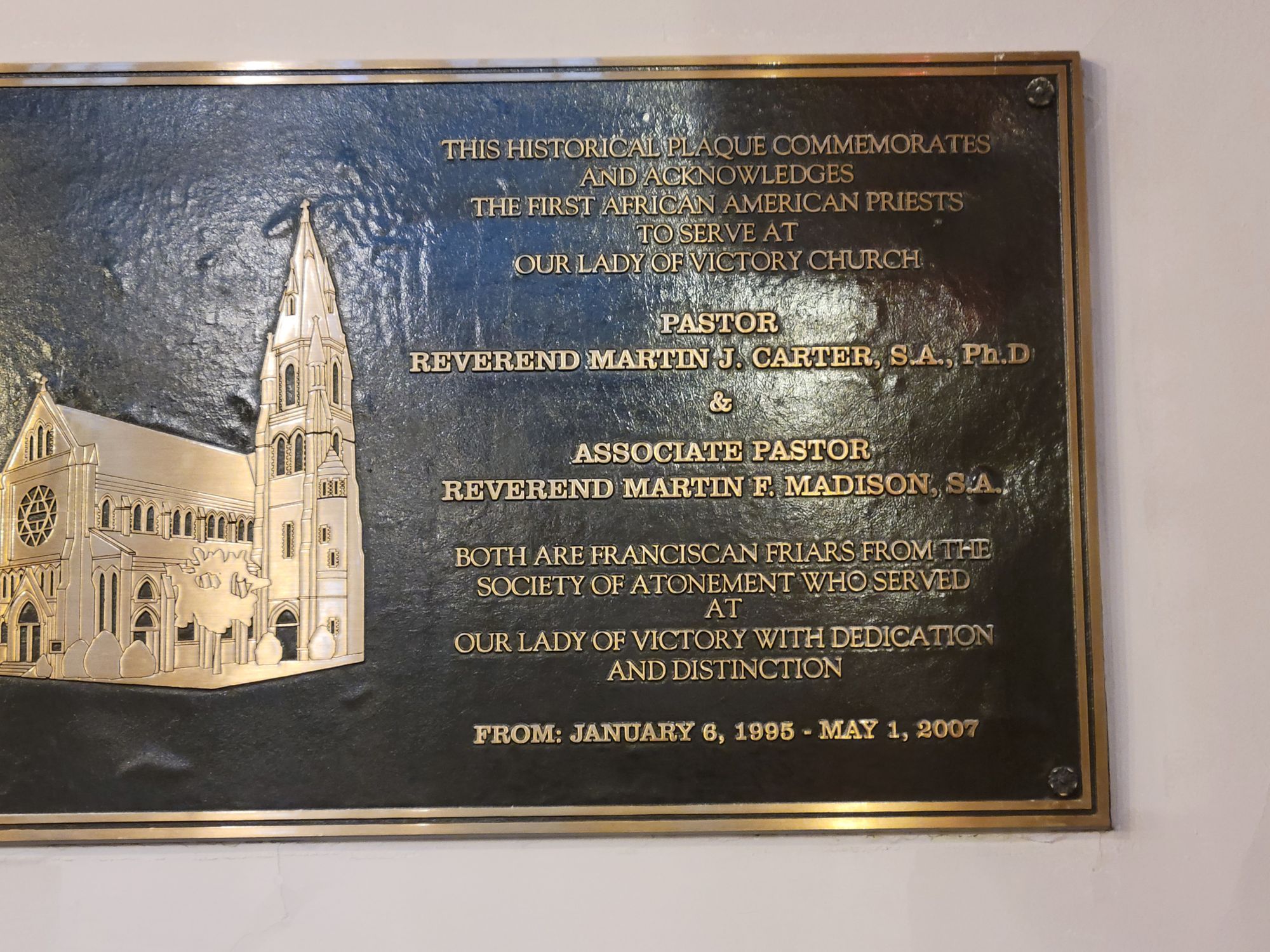
Former Kujenga chaperone and leader Jeff Hicks called Carter “an extraordinary priest that gave hope and faith to those that needed it”.
“He was remarkable and wise. And his commitment to the faith formation of our youth was shown in the Kujenga retreat every year.”
Elaina Stevenson, who alongside her husband Richard (“Steve”) was a Liaison member and leader in the Kujenga retreat, called Carter “the dial that pointed us in the direction of Jesus. He was always there.”
“He never felt like a threat, he always felt embracing. He was a good man.”
Hearing his voice
As I approached the casket, I felt a sense of sadness. Fr Carter is the reason that I stayed in the Church. He gave me my culture and heritage and told me that it was OK to celebrate it in the Church.
I came to an understanding of Gospel music and other cultural music. The youth of the Church owe him a great debt of gratitude. The Kujenga retreat now has authors, doctors, educators, and administrators as alumni. I am proud to say that I saw many Kujengans grow up. My parish group continues to hold our Martin Luther King and Black history celebrations.
I then began speaking with him. It was only me and an opened casket. In my conversation, I thanked him for what he did for my parish and for me. I asked him to say hello to all of our OBM friends who will be there in heaven to greet him. I also asked him to say hello to my dad.
Then, I made the sign of the cross.
Bishop Brennan noted during the Funeral Mass that Carter was baptized on Christmas Eve and that Carter loved Christmas. This past Christmas, on the day that the world celebrates our savior’s birth, God himself received a special gift. Father Carter went home to Him. A man who fought for and loved his Black people, leading us to Victory.
I will always hear his baritone voice with the angels. He will be singing a song. A song he ended every Mass and meeting with.
“May the Lord bless you and keep you.
May the Lord lift his countenance upon you.
And give you peace, and give you peace.
May the Lord bless you.
In the name of the Father, and the son,
and the Holy Spirit.”
Go in peace, our friend and mentor, Fr Martin J. Carter, SA.
Donna Leslie is a freelance journalist and media producer. Her articles have appeared in the Brooklyn diocesan newspaper, The Tablet. She was a member of the OBM Liaison Team and is a member of the VBCC Board. She is a parish leader at Our Lady of the Presentation-Our Lady of Mercy Church in Brooklyn.


